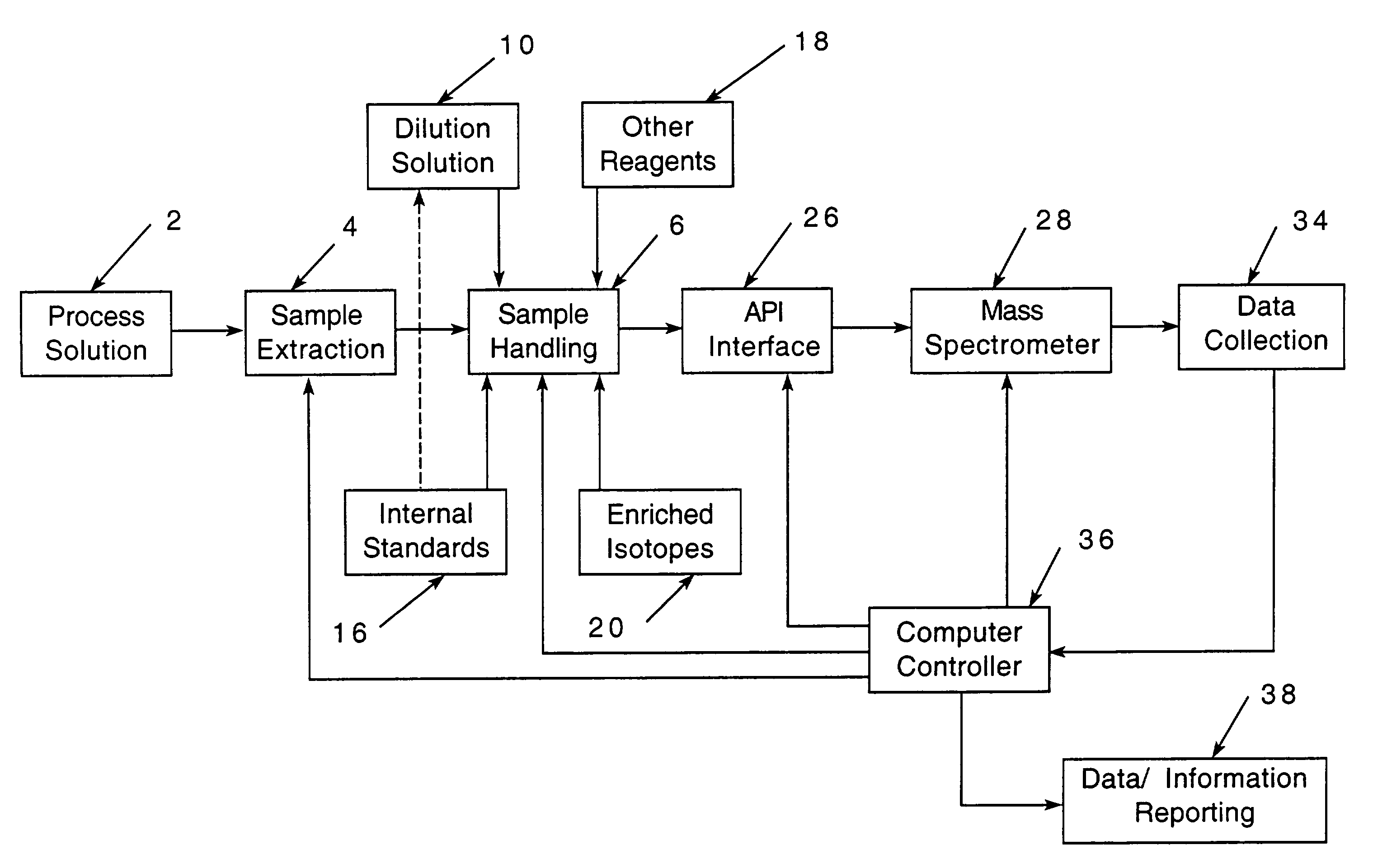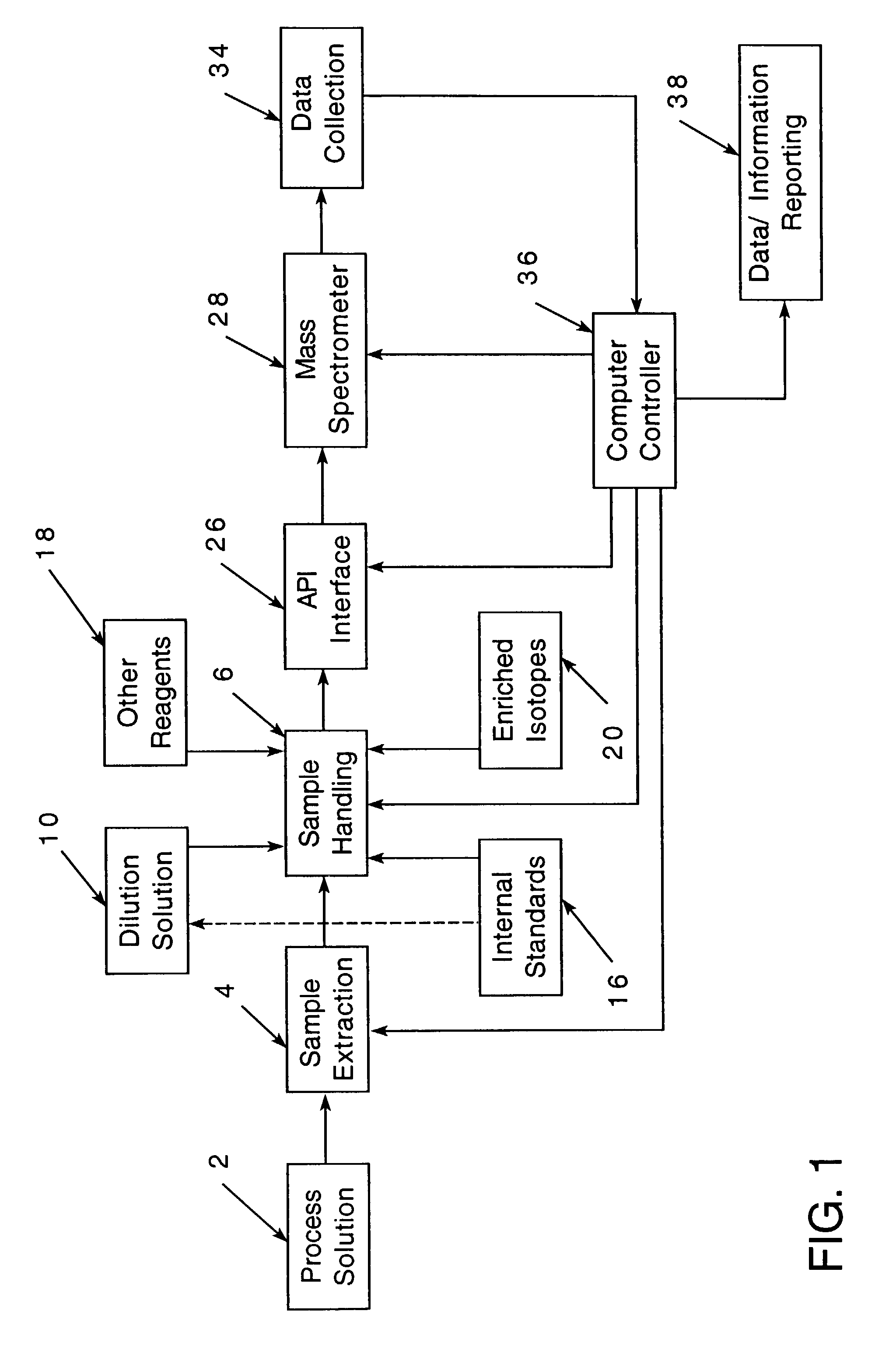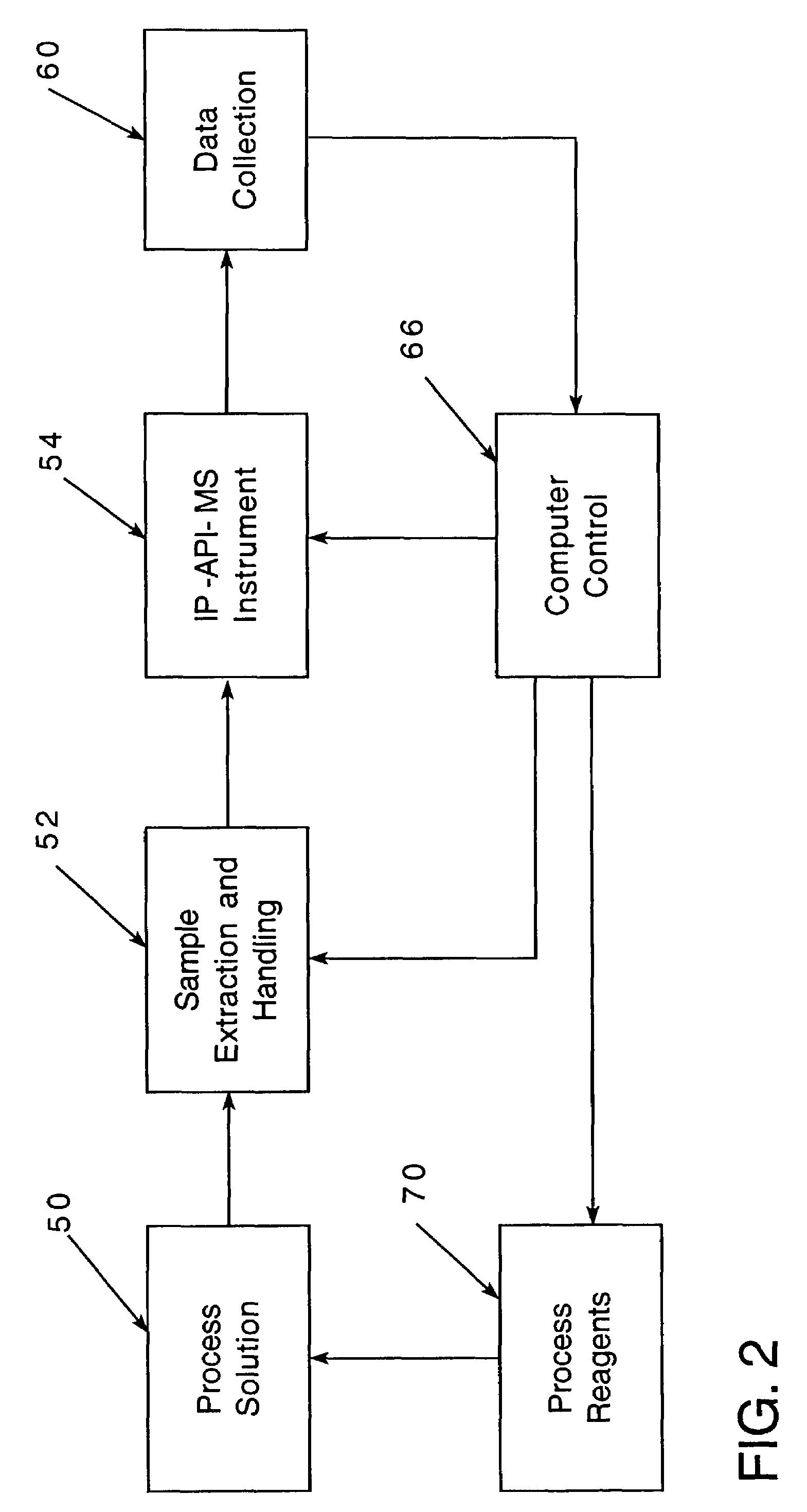Method and apparatus for automated analysis and characterization of chemical constituents of process solutions
a technology of chemical constituents and process solutions, applied in the field of automated analysis and characterization of chemical constituents of process solutions, can solve the problems of providing no informative data regarding the plating, deposited films with steady state level of contamination, and still subject to change in the level of contamination in the film
- Summary
- Abstract
- Description
- Claims
- Application Information
AI Technical Summary
Benefits of technology
Problems solved by technology
Method used
Image
Examples
example
[0081]An example of an acid copper plating solution will be considered.
[0082]
ConstituentRange of Amounts in ppmCu2+ (from CuSO4)10-20,000Cl− (from HCl)40-160Organic additives (one or more)Leveler (such as a polyalkyleneimine) 1-50Accelerator (such as a sulfo sulfonate)10-50Suppressor (such as a polyether additive)10-1000
[0083]In addition, the solution might contain impurities.
[0084]The present invention facilitates maintaining the plating solution within the desired chemical ranges.
[0085]While for convenience of disclosure emphasis has been placed on use in an in-process solution which was employed in an electroplating process, it will be appreciated that the invention is not so limited and may be employed advantageously in many other solution analyses. For example, it might be employed in connection with nuclear process cooling water, drinking water or monitoring water for environmental purposes.
[0086]In nuclear process cooling water, the maintenance, and sometimes reduction, of me...
PUM
 Login to View More
Login to View More Abstract
Description
Claims
Application Information
 Login to View More
Login to View More - R&D
- Intellectual Property
- Life Sciences
- Materials
- Tech Scout
- Unparalleled Data Quality
- Higher Quality Content
- 60% Fewer Hallucinations
Browse by: Latest US Patents, China's latest patents, Technical Efficacy Thesaurus, Application Domain, Technology Topic, Popular Technical Reports.
© 2025 PatSnap. All rights reserved.Legal|Privacy policy|Modern Slavery Act Transparency Statement|Sitemap|About US| Contact US: help@patsnap.com



